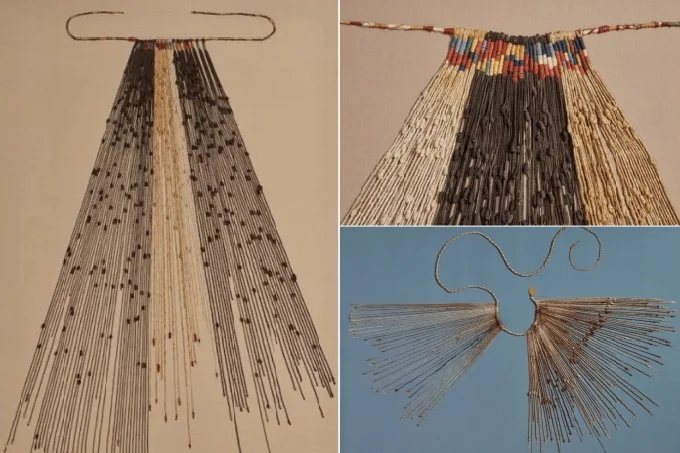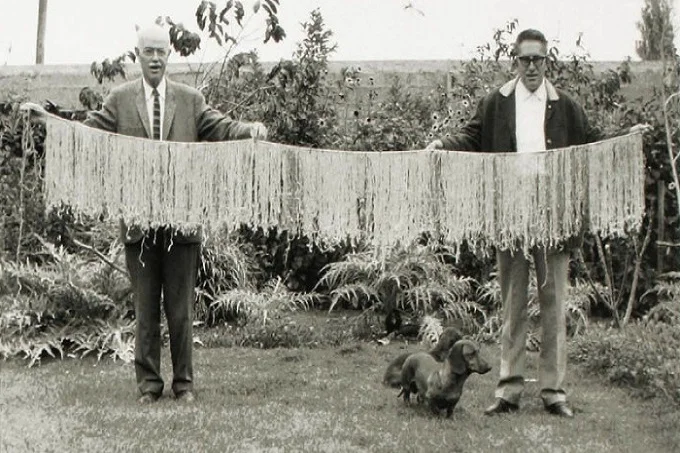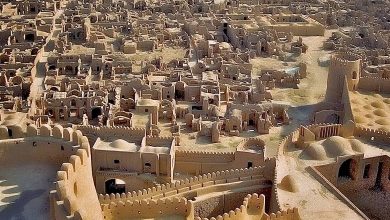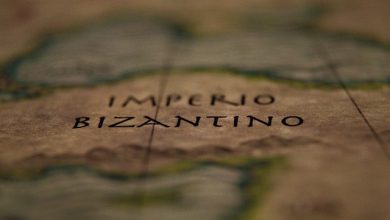How the Incas, who had no writing, sent messages to each other: What is Quipu

Every country has its own means of communication in addition to the spoken word that we are all familiar with. Some devised hieroglyphs that could be utilized to represent whole words, while others spelled down each letter separately. However, some individuals have never had access to writing. The Incan Empire was the biggest in pre-Columbian America and was known for string-based recording devices called Quipu.
In the Inca empire, any written text was replaced by threads and a cunning knot knitting skill. It was known as “quipu” by the Incas. And this language is over a thousand years old, despite the fact that the Incas did not arrive until much later.
The Inca Empire
The Inca Empire was one of the most powerful and fascinating kingdoms to emerge in the Americas. Cuzco, in modern-day Southern Peru, is said to be the birthplace of the Inca Empire.
True, the Incas themselves believed that their people were created by the sun god Inti, who sent his son Manco Capac also known as Manco Inca, to Earth. Legend has it that he first killed his brothers and then brought his sisters to a valley near Cuzco. They settled there around 1200 AD. Therefore, giving rise to new people.
The Inca Empire grew slowly. The fourth emperor, Mayta Capac, began this process. True, it was only under the eighth ruler of Viracocha that the expansion became more noticeable and systemic. Viracocha was the one who introduced the rule to leave military garrisons on the lands to maintain peace.
The Inca Empire dominated most of South America between the 14th and 16th centuries until the arrival of the Spanish in the New World. It was a highly developed, hyper-hierarchized, and hyper-centralized civilization that, surprisingly, lacked a writing system. The Incas didn’t know how to write, but that didn’t matter. The rulers and officials controlled this vast territory thanks to the nodes.
What is a quipu? The mysterious Inca knots
Quipu or khipu (from Quechua khipu, “knot”) is one of the types of nodular writing. There was nothing particularly complicated in this system, but this is only at first glance.

A quipu is one common rope, on which others are tied, freely hanging down. Their number is not limited by anything, except perhaps by the amount of information that they want to convey. Therefore, sometimes there were not just a few dozen “speaking” threads but could be up to a thousand. Among other things, the color of the thread also played a huge role.
Different types of knots, different types of threads in the dexterous hands of “quipucamayocs”, as the “chroniclers” were called from the knot writing, could store huge amounts of information. Thus, information was collected and transmitted directly to the emperor about the harvest, tribute, and spending of individual provinces on the economy from all corners of the Empire.
However, do not assume that the quipu was used solely for reporting purposes. This language was quite universal to allow “writing” a chronicle of rulers’ lives, creating whole genealogical “books”, writing down myths and legends, even writing poetry.
The secret legacy of the ancient Incas
Unfortunately, many khipus have not survived our time. At the moment, only 1,400 khipus are kept in museums and private collections. This is an insignificant number of chronicles for such a huge and ancient civilization as the Inca Empire.

Quipu recorded data of all kinds: demographic censuses, tribute control, chronology, calendars. To do this, the Incas used various types of nodes, representing numbers in the decimal system, which was to be read from bottom to top (the bottom nodes represented ones, just above them – tens, at the top level – hundreds, and so on).
The system was somewhat reminiscent of the usual abacus of every person. Only there were knots instead of knuckles. A double knot represented 1, and a compound knot could represent numbers from 2 to 9, depending on the twists the knot makes around the warp. The absence of a node indicates 0.
This is where the problems of modern scientists began. If the mathematical aspect of the khipu turned out to be quite simple to solve, then how exactly the direction of the thread in the nodes (from left to right and vice versa), the color of the rope, and even the distance between the nodes could affect the change in data, still remains a mystery.
Some researchers suggest that the color of the yarn in the threads indicated the counting theme. That is, if it was a report on tribute, then threads of one specific color were taken, and if it was about the harvest, the color was different. So far, it was possible to guess only 24 shades. So, for example, black threads were responsible for a certain time period, and golden ones indicated either gold or corn harvest.
Why did the Spaniards destroy the quipu?
There is evidence that nodular writing was used in that region long before the rise of the Inca Empire. The first found khipu dates back to the third millennium BC. There was no question of any Incas then.
This language was understood exclusively by the local population. Among modern scientists and historians, there is no one who would be able to “read” a khipu, all that remains is to guess and select meanings.

Things were even worse during the Spanish colonization. The Spaniards did not even suspect that knots on hundreds of ropes were nothing more than bureaucratic documentation. Since the conquistadors constantly bumped into quipu, they decided that this was such a pagan ritual associated with a curse. The solution to the problem turned out to be simple and straightforward: all the khipu encountered were subject to immediate destruction.
True, having roughly understood the nature of the nodular writing, the conquistadors recognized its usefulness – it was easier to slightly modernize the kipa to suit their needs than to force the “uneducated natives” to write in the Latin script that is understandable and familiar to “enlightened Europeans”. However, it turned out that the quipucamayoc did not always provide truthful information, diligently harming the invaders, and it was not so easy to decipher the khipu for a person who was not accustomed to such a “letter”. Therefore, another wave of quipu destruction began.
People that used the nodular letter
It is generally accepted that nodular writing is exclusively the prerogative of the peoples of South America. However, in the East, in ancient times, they also used a similar type of writing. Traces of nodular writing were also found in China, Tibet, Africa, and the European continent was no exception.
The story of how people learned to speak and how other living beings communicate with the world and with each other is much more complicated and interesting. Each type of communication has its characteristics, and, as it turned out, animals also have their distinctive ways of communicating.




